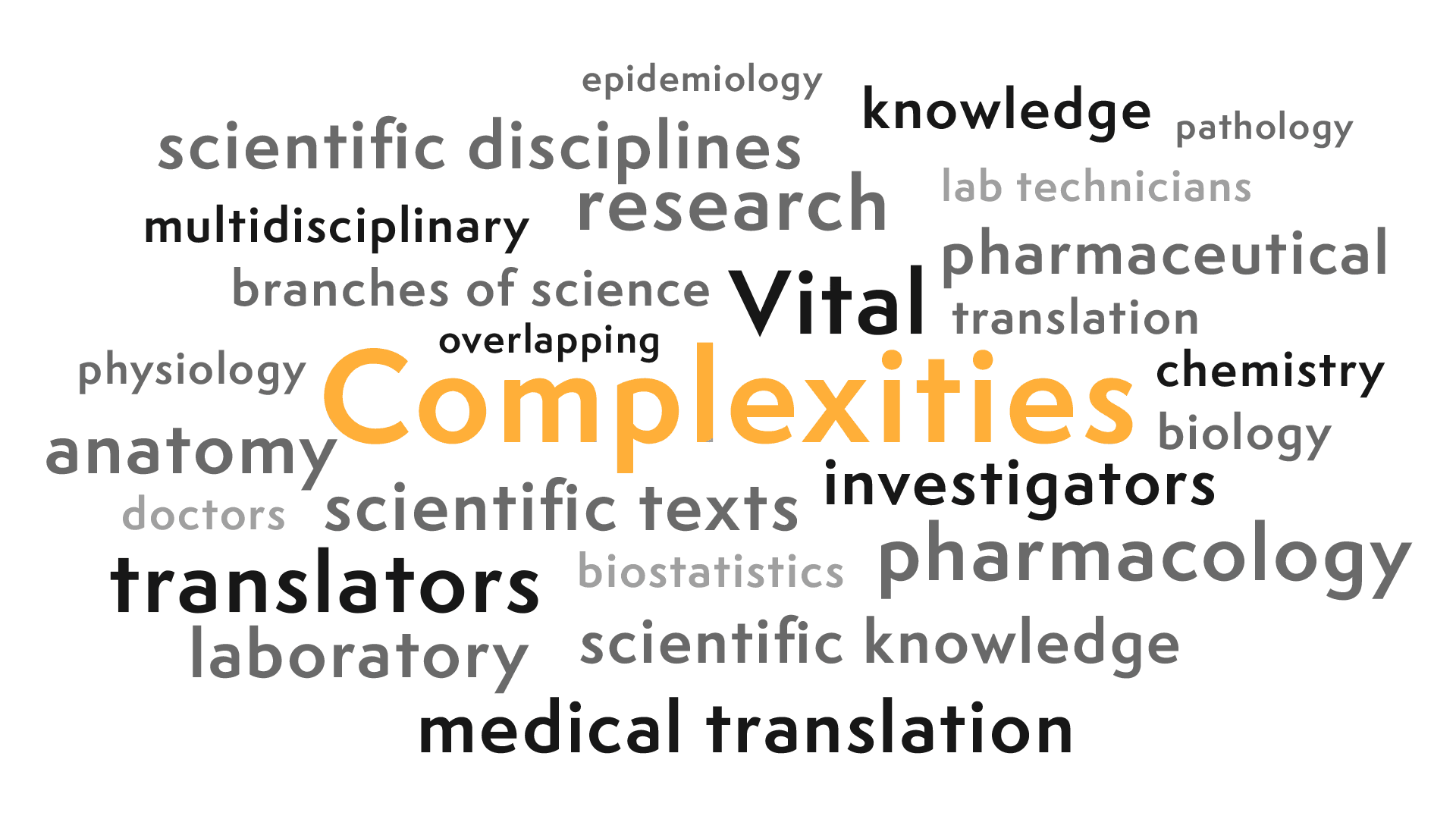Each type of text has its unique complexities, but scientific texts in the medical and pharmaceutical fields have intricate characteristics that translators have to fully grasp to properly approach the source text and render it accurately in the target language.
Complexity #1: Overlapping of different scientific disciplines
The current trend towards multidisciplinary investigation and the unification of scientific knowledge has led to an overlapping of different branches of science; for example, chemistry, physics, biology, genetics, psychology, sociology, pathology, epidemiology, biostatistics, logic, computer science, and so on. This has made medical texts even more complex. As translators, not being able to identify these scientific disciplines in the content of the source text can interfere with the comprehension of the overall text and hinder the search of the appropriate terms to express the original message in the target language.
Complexity #2: The authors of scientific texts are not linguists
Most medical and pharmaceutical texts are written by lab technicians, doctors, investigators, scientists that are competent in the fields they work, but most of them are not linguists as well, and this is sometimes reflected in the source text. It may be due to lack of time to complete and present the texts or due to lack of proper linguistic knowledge, but translators do sometimes face with source awkward sentences or typographical errors that can only be detected by the experienced eye of a specialised medical translator with the appropriate subject matter knowledge, who, independently of how well the source text is written, can properly grasp the idea and transfer it faithfully without much inconvenience. Subject matter knowledge of different scientific disciplines can help overcome this complexity.
Complexity #3: Scientific language is not universal
Scientific knowledge is universal, but scientific language is not. Although English is currently considered the “universal” language of science, medical translators need to be clear that each language has its own rules to write about science. Medical translators have to fully understand what they are translating about, and how to properly transfer the scientific knowledge presented in the medical and pharmaceutical texts into the target language without giving in to temptation of literally transferring the source syntactical structure, word order, and terminology, and this is done by mastering the grammatical and orthographic rules of the language pair we are working with, and having some basic knowledge about the subject matter we are translating about, of course.
Speaking two languages, having formal translations skills, and having randomly translated some medical documents in the past does not make you a specialised medical translator.
What makes you a specialised medical translator then?
Having learned—and mastered—some of the medical and pharmaceutical knowledge the real experts know. To be medical translators, we have to be a little bit of a doctor, a little bit of a nurse, a little bit of a pharmacist, a little bit of a lab technician; that is, to know a little bit of what the experts that elaborate the texts we have to translate know, and only then we will be able to fully grasp the content of the medical and pharmaceutical texts and transfer the original message without distortion or interference due to lack of subject matter knowledge.
Want to be a professional medical translator?
Well, get prepared then!
Get into the wonderful scientific world by learning basic concepts of chemistry, biochemistry, biology, anatomy, physiology, biostatistics, pharmacology—just to mention some—to fully understand the content of the medical and pharmaceutical texts you may have to translate.
Terminology comes along. There are lots of official and reliable terminological databases you can use, but those resources won´t be of much help if you don’t know what you have to look up or which term to choose when there is more than one option for your term search.
Subject matter knowledge and context are key to overcome these complexities, to make the correct linguistic choices and to generate accurate medical translations.

